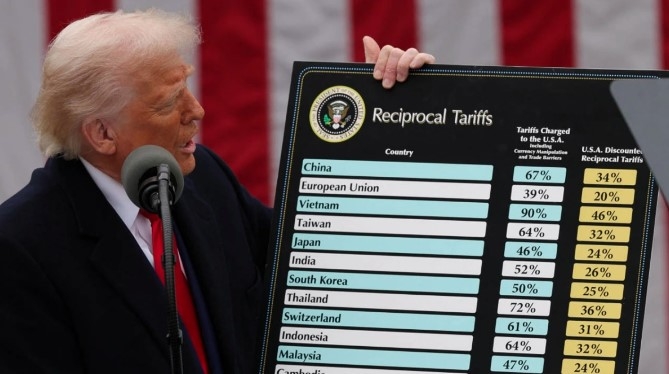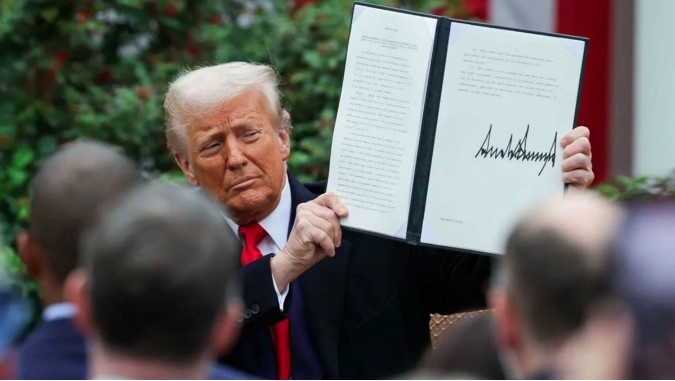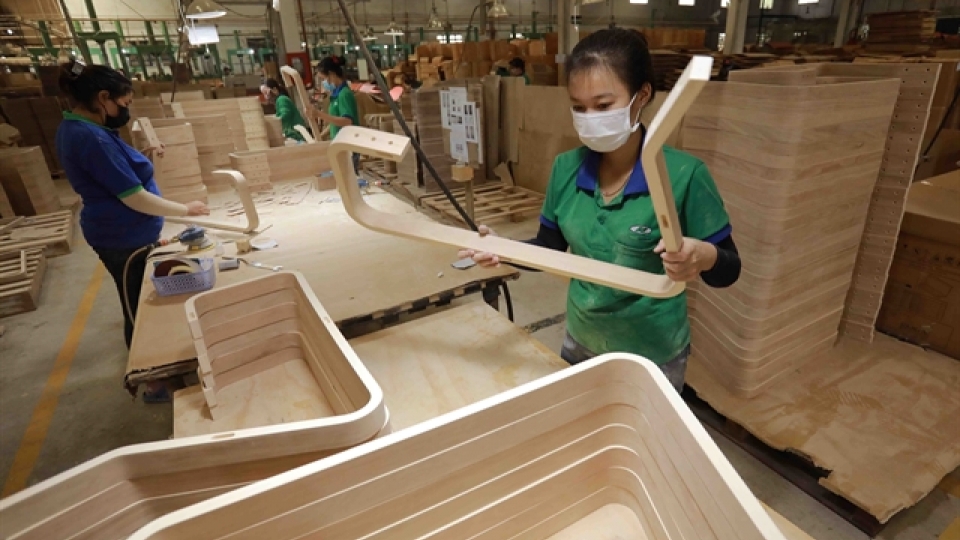US imposes 46% reciprocal tariff on Vietnam: How to weather the shock?
VOV.VN - US President Donald Trump has officially announced reciprocal tariffs on multiple economies, with Vietnam facing the highest rate of up to 46%.
This move has sent shockwaves through the global economy and poses significant challenges for Vietnam’s economic landscape.
Enforcing a 'devastating' 46% tariff
In the early hours of April 3 (Vietnam time), President Donald Trump announced countervailing tariffs on dozens of economies, with Vietnam hit the hardest.
According to the US administration, the high tariff rate reflects concerns over Vietnam’s alleged benefits from unfair trade policies and government subsidies for exporters. Vietnam is also among the countries with a large trade surplus with the US, similar to China in previous years.
The US is currently Vietnam’s largest export market, accounting for over 25% of its total export turnover. A 46% tariff on Vietnamese goods could deal a heavy blow to the country’s economy.
This tariff hike will weaken the competitiveness of Vietnamese exports, potentially leading to declining orders and revenue losses for businesses. Rising production costs may force companies to cut expenses, seek alternative markets, or adjust prices.
With a 46% tariff, Vietnamese products will struggle to compete in the US market as their prices rise substantially, making them less appealing to American consumers. Key industries such as garments and textiles, footwear, electronics, furniture, and agriculture will be particularly affected.
Beyond its impact on exports, this tariff will also disrupt global supply chains, financial markets, and Vietnam’s economic growth.
Speaking to the press, Dr. Tran Toan Thang, head of the Industry and Business Economic Forecasting Department at the National Center for Socio-Economic Information and Forecasting, described the 46% tariff on 90% of Vietnamese exports as "devastating," emphasizing its widespread impact across multiple sectors.
Dr. Can Van Luc highlighted five key industries that will bear the brunt of the tariff(making up 64.3% of total exports to the US in 2024): electronics (including computers, electronic products, components, mobile phones, accessories, cameras, and camcorders), which account for 28.6% of total exports; garments and textiles and footwear (21.9%); wood and wood products (7.6%); agriculture, fisheries, and seafood (3.5%); and steel and aluminum (2.7%).
Beyond its impact on exports and economic growth, the US tariff hike could also push up costs, fuel inflationary pressures, trigger currency fluctuations, and increase stock market volatility. These challenges demand swift and proactive policy responses. However, Dr. Can Van Luc noted that the tariff rate remains under negotiation until April 9, and Vietnam must prepare for different scenarios.

Market diversification and trade negotiations
To mitigate the impact of US tariffs, Vietnam must focus on diversifying its export markets. Over-reliance on the US leaves the country vulnerable to abrupt shifts in American trade policies.
The government and businesses should bolster exports to other markets, including the EU, Japan, the Republic of Korea (RoK), and ASEAN member states.
Utilizing free trade agreements such as the European Union-Vietnam Free Trade Agreement (EVFTA) and the Regional Comprehensive Economic Partnership (RCEP) can open new opportunities and reduce dependence on the US.
Experts warn that a 46% tariff on Vietnamese exports presents a major challenge as Vietnam strives to sustain economic growth.
However, by expanding market reach, improve product quality, improving the investment climate, and augmenting international cooperation, Vietnam can navigate this crisis. Efforts to enhance business competitiveness, develop supporting industries, and build a more self-reliant economy will contribute to long-term stability.
The 46% countervailing tariff imposed by the US on Vietnamese goods is a major challenge for the Vietnamese economy and domestic businesses.
However, with proactive government measures and business resilience, Vietnam can find ways to adapt and thrive in the new situation. Market diversification, supply chain optimization, and trade negotiations will be key to overcoming this difficult period.




